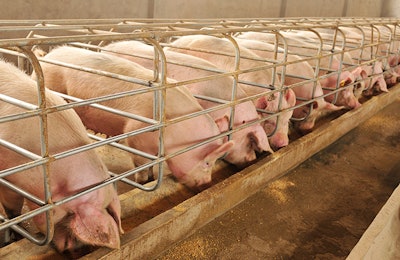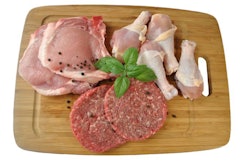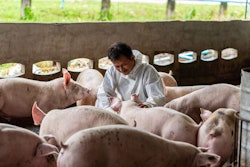
The US swine industry is better prepared now than ever for an outbreak of ASF, but continuous improvement is necessary.
Since African swine fever (ASF) was detected in pigs in the Dominican Republic in July and in Haiti in September, much of the attention of North American swine industry stakeholders has focused on U.S. ports of entry.
Experts agree the U.S. is better prepared to prevent ASF from entering the U.S. than it was when the virus was first detected in China in 2018, but the preparation never stops and should always be improving.
“We will never arrive at a point where we say that we’re done working on this issue or that we’ve finished the work of preparedness. It simply isn’t possible,” said Iowa Secretary of Agriculture Mike Naig in a webinar presented by the Iowa Farm Bureau in November. “What we try to live every day is that we want to be better today than we were yesterday. We want to be better next week than we are this week. And that is our effort around continuous improvement, particularly as it relates to this.”
Paul Sundberg, executive director at the Swine Health Information Center, told Feed Strategy that there are multiple layers of detection and prevention at ports of entry, such as U.S. Customs and Border Patrol (CBP) agents who are aware of the risks of ASF, and more Beagle Brigade detector dogs.
“We’re much better for surveillance and preparedness, and much better in response because of the coordination than we’ve ever been,” he said.
The main risk factors for ASF to enter the U.S. are imported meat products from ASF-positive areas and imported feed ingredients from those areas.
“It’s not an either/or risk factor,” said Liz Wagstrom, National Pork Producers Council (NPPC) chief veterinarian, in an email. “The concern of bringing in contaminated meat products that could eventually find their way to a feral pig via garbage is one of the reasons that Customs and Border Protection is an essential member of the industry’s safety net. By increasing agricultural inspectors and canine teams, the goal is to keep, to the extent possible, illegal meat out of the country.”
Import concerns
Since the discovery of ASF in the Dominican Republic and Haiti, CBP has increased its focus on flights and ships from Hispaniola.
“Additionally, producers have been working with their feed suppliers for some years to implement holding times for imported ingredients imported from ASF-positive countries,” Wagstrom said. “Our industry organizations meet regularly with USDA (the U.S. Department of Agriculture) and FDA (the U.S. Food and Drug Administration) to discuss feed risk and identify and address gaps to help improve the safety of these imported ingredients from ASF-positive countries.”
And, while feed has long been viewed as one way ASF could enter ASF-free regions, Sundberg said he thinks that risk is low.
“There’s enough feed research that’s been done on ASF and feed and the survivability and the transmissibility via feed that I happily admit that that is a low probability of happening,” he said. However, “I believe that’s a low risk, but it is still a quantitative risk and it still is a high impact because, whether it’s low risk or not, if that happens, it shuts everything down because we’ve got ASF.”
Scott Dee, director of applied research at Pipestone Research, said his biggest worry is all types of imports.
“Not just feed imports, but containers and totes and what we call fomites – vehicles for moving pathogens,” he told Feed Strategy in an interview. “And the virus isn’t very far away. It doesn’t have to go across the Atlantic, it doesn’t have to go across the Pacific, it doesn’t have a 37-day transit time like it did from China. And so now we’re in a very different position.”
He added that, in the first half of 2021, more than 1,000 metric tons of products were imported from the Dominican Republic and Haiti into Puerto Rico and the mainland U.S.
“To me, those are vehicles to move pathogens from place to place and now they don’t have to go very far,” he said.
But Sundberg said his biggest concern is different: “If I’m going to say what’s the highest risk to the U.S. of importing ASF, I would put contaminated meat at the at the top.”
ASF vaccine development advances, but limitations remain
The past year has seen some promising advancements in the development of a vaccine against ASF, but there are some limitations.
USDA has developed vaccine candidates that, so far, seem to be safe and efficacious, but one challenge with the vaccines is that they only protect against one genotype of the virus. The other challenge is that there is no way to determine whether a pig has ASF antibodies as a result of vaccination or infection.
“I’m excited about the progress – I’m cheering on a daily basis – but if I was a farmer, I wouldn’t hold my breath because you’ve got to go through all those hoops before the thing’s proven safe, proven efficacious, given a license, mass produced. We don’t know what the cost will be. And we don’t know, if you vaccinate your herd, will you be able to export your pork,” Dee said.
That’s because the presence of ASF antibodies is enough to stop other countries from importing pork from an export market. So, unless those trade agreements change along with the development of a vaccine, the main goal of an ASF vaccine will be survivability of pigs, not maintenance of trade.
“Don’t assume that this could be used in any way prophylactically to prevent infection in the U.S. or North America or anywhere else. The first problem with it is that you can’t tell the difference between that vaccine and wild-type vaccine antibody,” Sundberg said. “If somebody comes in and tests those pigs, they’re going to find they have antibodies against African swine fever, and you won’t know if they’ve been vaccinated or if there’s an underlying ASF infection in that country. And so that stops all international trade.”
For this reason, Dee said there will need to be a vaccine at some point where the difference between the real virus and the vaccine virus can be detected.
“The only value I think it has is, if we get infected, then you could come in and shut down losses,” he said. “But you’re still considered positive, so you lost all your trade. So, for a positive country, it’s got a lot more value than a negative country.”


















